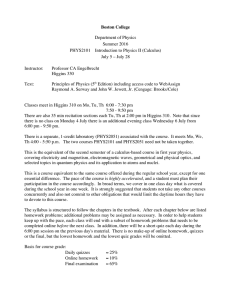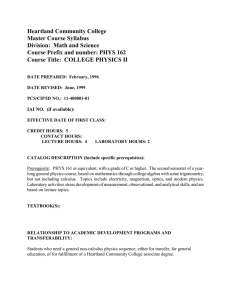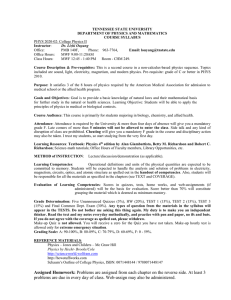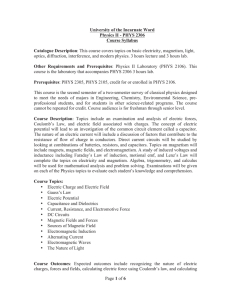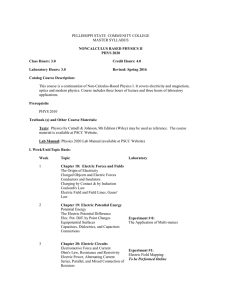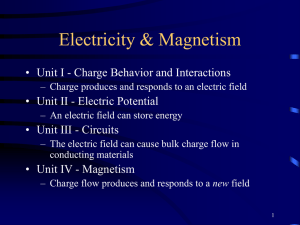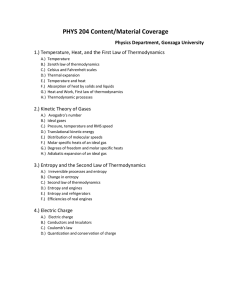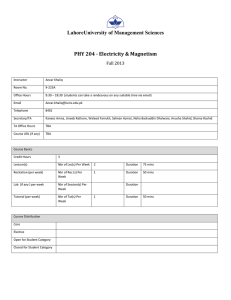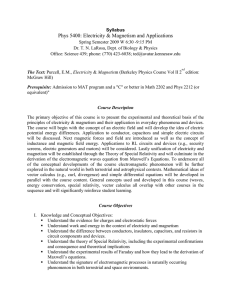PHY 184 Outline.doc
advertisement
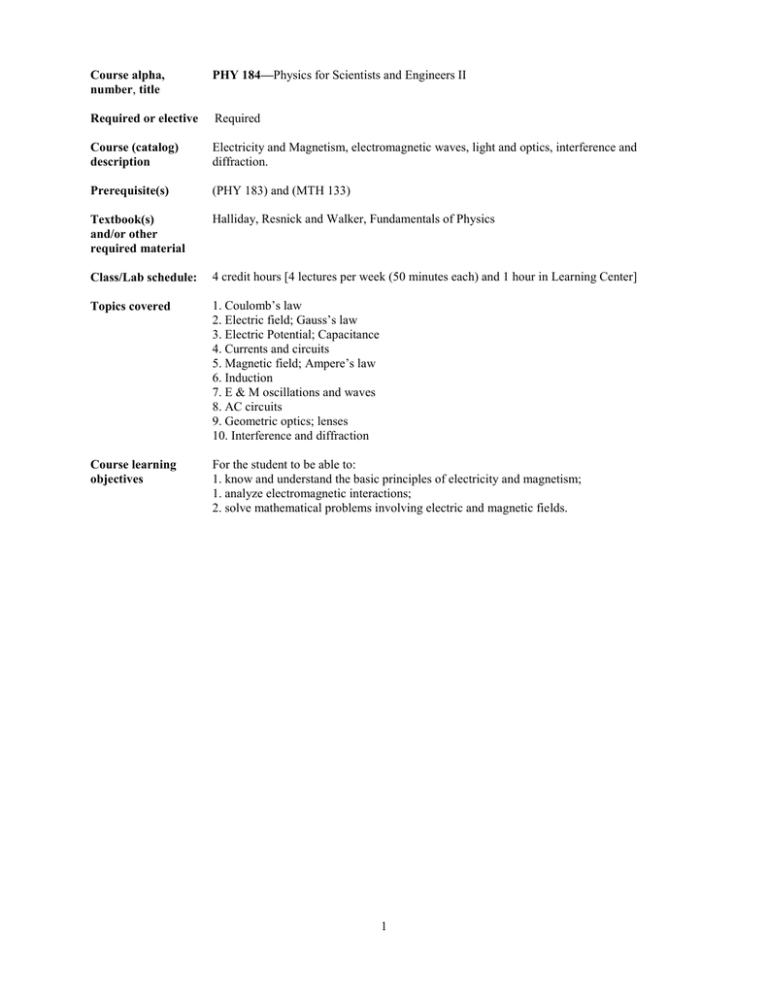
Course alpha, number, title PHY 184—Physics for Scientists and Engineers II Required or elective Required Course (catalog) description Electricity and Magnetism, electromagnetic waves, light and optics, interference and diffraction. Prerequisite(s) (PHY 183) and (MTH 133) Textbook(s) and/or other required material Halliday, Resnick and Walker, Fundamentals of Physics Class/Lab schedule: 4 credit hours [4 lectures per week (50 minutes each) and 1 hour in Learning Center] Topics covered 1. Coulomb’s law 2. Electric field; Gauss’s law 3. Electric Potential; Capacitance 4. Currents and circuits 5. Magnetic field; Ampere’s law 6. Induction 7. E & M oscillations and waves 8. AC circuits 9. Geometric optics; lenses 10. Interference and diffraction Course learning objectives For the student to be able to: 1. know and understand the basic principles of electricity and magnetism; 1. analyze electromagnetic interactions; 2. solve mathematical problems involving electric and magnetic fields. 1 Relationship of course to ME program outcomes The following measurement standard is used to evaluate the relationship between the course outcomes and the educational-program outcomes: 3 = Strong Emphasis, 2 = Some Emphasis, 1 = Little or No Emphasis. (a) an ability to apply knowledge of mathematics, science, and engineering—3 (b) an ability to design and conduct experiments, as well as to analyze and interpret data—1 (c) an ability to design a system, component, or process to meet desired needs—1 (d) an ability to function on multi-disciplinary teams—1 (e) an ability to identify, formulate, and solve engineering problems—1 (f) an understanding of professional and ethical responsibility—1 (g) an ability to communicate effectively—1 (h) the broad education necessary to understand the impact of engineering solutions in a global/societal context—1 (i) a recognition of the need for and the ability to engage in life-long learning—1 (j) a knowledge of contemporary issues—1 (k) an ability to use the techniques, skills, and modern engineering tools necessary for engineering practice—1 (l) design, build, and test in mechanical systems area—1 (m) design, build, and test in thermal/fluids area—1 (n) application of advanced mathematics—1 (o) capstone design experience—1 Contribution to professional component: 100% Mathematics and Basic Science Person(s) who prepared this description Daniel Stump Associate Chairperson and Undergraduate Program Director Department of Physics and Astronomy Date of Preparation February 2, 2004 2
